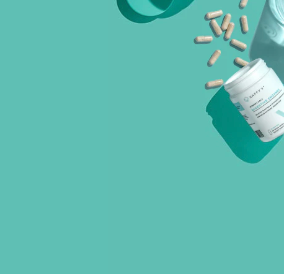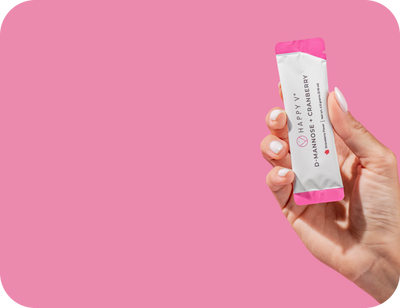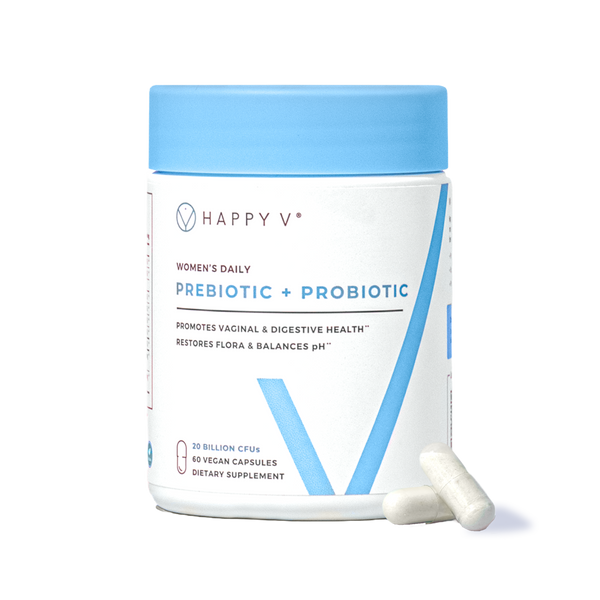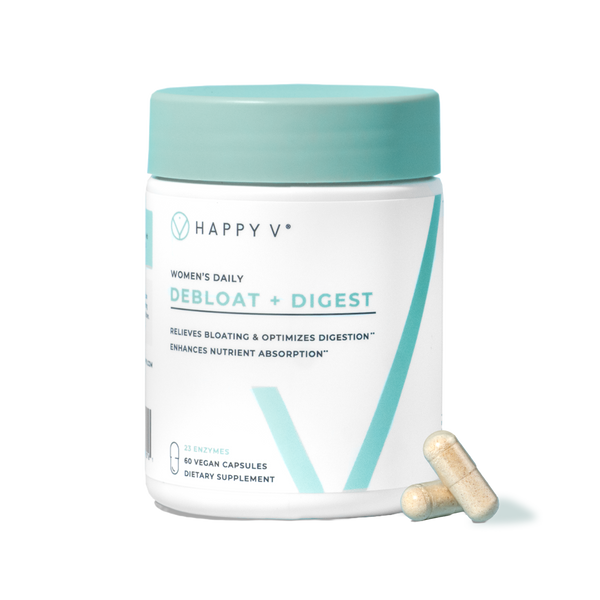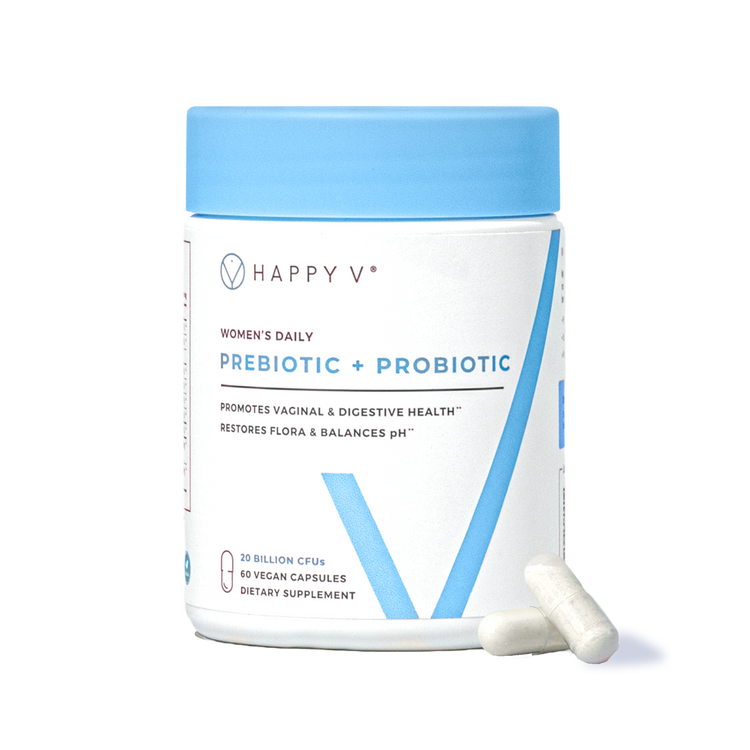- Fact Checked
- May 26, 2025
- 9 min read
6 Natural Ways To Fix Your Vaginal pH Balance Overnight
Table of Contents
Table of Contents
Let’s be honest: when something feels off down there, it affects everything. Your confidence, your comfort, your relationships.
But if your first instinct is to search “how to fix my pH balance fast,” you’re not alone. Vaginal pH imbalance is more common than people realize — and while it’s frustrating, it’s also fixable.
In this guide, we’ll explain what pH balance really means, how to tell when it’s off, and the evidence-backed ways to restore it naturally. There will be no gimmicks, no shame, just facts, empathy, and a clear path forward.
This post is for informational purposes only and does not constitute medical advice. See full disclaimer below.
What Is Vaginal pH and Why Does It Matter?
What Is a Normal Vaginal pH?
The pH scale measures how acidic or alkaline something is — from 0 (acidic) to 14 (alkaline). A healthy vaginal pH sits on the acidic side, typically between 3.8 and 4.51.
This acidity is important for your vaginal health. It kills off bad, infection-causing bacteria while allowing good, balance-promoting bacteria to thrive. How exactly does it do that? Keep reading!
Why Vaginal pH Balance Is Crucial for Health
A healthy vaginal pH balance is maintained by Lactobacillus bacteria. These microbes convert glycogen in vaginal tissues into lactic acid, which keeps things slightly acidic — an acidic environment where most pathogens can’t thrive. Some strains even produce hydrogen peroxide (H₂O₂), offering further protection2.
But when that balance tips — when Lactobacillus numbers drop and pH rises — other bacteria like Gardnerella vaginalis or Atopobium vaginae can take over3.
This imbalance is known as vaginal dysbiosis, and it’s often the root cause of bacterial vaginosis (BV) and yeast infections. It can also make people more susceptible to sexually transmitted infections.
Common Causes of Imbalance
Sexual Activity
Semen is alkaline (pH 7.2–8)4, which can temporarily raise vaginal pH levels. New or multiple partners are also linked to higher BV risk due to microbiome mixing.
Menstruation
Blood is less acidic than a healthy vagina, so pH naturally rises during your period5. Products like tampons can also affect pH depending on how long they are worn and the materials used.
Menstrual cups may be a better option than tampons for those concerned about vaginal pH. They collect rather than absorb blood, reducing prolonged contact between menstrual blood and vaginal walls.
Antibiotics
While antibiotics kill bad bacteria, they also wipe out healthy bacteria6 like Lactobacillus, opening the door for imbalance and unhealthy bacteria.
Douching
Despite popular myths, douching disrupts the vaginal flora7 and increases BV risk. The vagina is a self-cleaning organ and does not require internal washing.
Scented Soaps, Steams & Lubricants
Scented soaps, vaginal steaming, and lubricants with glycerin or flavors can all disrupt your vaginal microbiome. Opt for mild, unscented cleansers and water- or silicone-based lubricants only.
Swimming
Chlorine and damp swimwear can affect pH by introducing chemicals and creating warm, wet environments that allow harmful bacteria to thrive.
Low Estrogen & Hormonal Birth Control
Estrogen supports glycogen production, which feeds Lactobacillus. Lower estrogen (e.g., during menopause) or hormone shifts due to IUDs and certain birth controls can disrupt the vaginal microbiome8.
Signs Your pH Balance Might Be Off
Common Symptoms
- A foul odor (often described as “fishy” — but we prefer “strong or unusual”)
- Thin, gray or milky vaginal discharge
- Burning sensation during urination
- Itchiness or irritation
- Discomfort during sex
Up to 50% of people with BV have no symptoms at all9, but when symptoms show up, they often reflect a shift in pH levels.
How to Know for Sure
The quickest way? Use an over-the-counter vaginal pH test strip. A pH greater than 4.5 may indicate BV or another imbalance in the pH of the vagina.
Clinics also use Amsel criteria, which include pH testing, examining discharge under a microscope (for "clue cells"), and checking for odor changes after adding potassium hydroxide — known as the “whiff test”10.
When to See a Provider
Check in with a healthcare professional if:
- This is your first time experiencing symptoms
- You have pain, fever, or pelvic pressure
- You recently changed partners
- You have recurring BV or yeast infections
- You tried over-the-counter treatments without relief
Even if you’re not symptomatic, regular checkups with an OB/GYN help you monitor vaginal health and rule out underlying conditions.
Quick Ways to Restore Your pH Balance Fast
Here’s what might help you feel better — sooner:
Drink More Water
While hydration is good for overall health, no clinical data confirms that warm water directly changes vaginal pH. That said, staying hydrated supports your immune and urinary tract infections defenses.
Avoid Sugar and Processed Foods
Diets high in refined carbs and sugar may promote overgrowth of bad bacteria. Some evidence links low-glycemic, nutrient-rich diets to fewer vaginal infections.
Wear Breathable Cotton Underwear
Cotton allows airflow and reduces moisture — key for maintaining healthy vaginal pH. Avoid synthetic fabrics and thongs when you’re feeling off. And yes, skipping underwear at night is totally fine.
Use pH-Balanced Cleansers — But Skip the Douching
The vagina is self-cleaning. Douching strips away good bacteria and disrupts the natural vaginal microbiome. Stick to gentle, pH-balanced cleansers externally.
Natural Remedies That Actually Work
Probiotics (Lactobacillus-rich)
Probiotic supplements can help restore healthy bacteria like Lactobacillus. They:
- Produce lactic acid to lower pH
- Compete with harmful bacteria
- Support your vaginal flora
Look for strains like L. rhamnosus, L. acidophilus, and L. crispatus11.
Prebiotics
Prebiotics are plant-based fibers that nourish good bacteria. Foods like asparagus, garlic, onions, and bananas support gut and vaginal health. Many supplements, like Happy V’s, combine prebiotics and probiotics for optimal daily support.
Prebiotic + Probiotic
Maintains vaginal pH and restores gut health.
Boric Acid Suppositories
These may help restore pH balance short-term12 but should be used with medical guidance.
Apple Cider Vinegar Baths — Fact vs Fiction
Popular? Yes. Effective? Not really. May irritate sensitive tissue without restoring acidic pH. If you want to try it, dilute a small amount in water and drink it — never apply ACV directly to your vagina.
Fermented Foods: Yogurt, Kimchi, Sauerkraut, Kefir
While these support gut health, they don’t reliably correct vaginal pH levels. But they can support your immune system13.
Garlic Tablets
Garlic is rich in allicin, a compound with antimicrobial properties. While some suggest intravaginal use, experts recommend taking odorless garlic tablets orally instead.
What to Eat and Drink for Better pH Balance
Turns out that saying "you are what you eat" has a lot of merit, especially when it comes to your vaginal health. If you have been struggling with pH imbalance and vaginal infection, simple changes to your diet can go a long way.
Foods That Support a Healthy Microbiome
When you eat, you aren't just feeding yourself. You're also feeding the bacteria living in your gut and vaginal microbiomes. Here are foods that those healthy bacteria love:
- Leafy greens. Leafy greens are rich in antioxidants and vitamins that help reduce inflammation and support a healthy microbiome.
- Garlic. Garlic is a natural antimicrobial (aka bad bacteria fighter).
- Cranberries. Cranberries contain compounds known to prevent urinary tract infections. Just make sure to avoid sugary cranberry juices.
Helpful Drinks
Hydration has so many benefits. When it comes to your vaginal health, good hydration means more trips to the bathroom, which means more opportunities to flush bad bacteria before it can cause trouble. Here are the drinks to focus on.
- Water. Not surprising, right? Water is the GOAT. Aim for 6-8 glasses a day.
- Chlorophyll water. Some scientific evidence shows that adding some liquid chlorophyll to your water offers mild antioxidant benefits.
- Unsweetened cranberry juice. Unsweetened cranberry juice offers those UTI-fighting compounds without all the excess sugar.
Foods & Drinks to Avoid
Just as some foods can fuel the good bacteria in your microbiome, other foods can fuel the bad. Here are foods to limit or avoid, especially if you have a history of vaginal infections.
- Excess sugar. Sugar is a favorite food of yeast and other harmful bacteria, potentially fueling their growth.
- Alcohol. Alcohol dehydrates the body and disrupts microbial balance, especially when consumed regularly or in excess. Limit your intake and make sure to pair it with plenty of hydrating water!
Long-Term Prevention and Maintenance
Your diet isn't the only lifestyle factor affecting your vaginal health. Simple changes can go a long way to improving your pH balance for the long term. Focus on:
-
Avoiding douching and fragranced products. Douching can wash away good bacteria, and scented products often get their smells through chemicals that can irritate your vagina and throw off pH balance. When it comes to washing, stick to mild, unscented soap and warm water only.
-
Reducing stress. High cortisol levels from chronic stress can lower your levels of protective Lactobacillus. Keep your stress levels in check through daily exercise, deep breathing, and just-for-fun hobbies.
- Using condoms. Semen is alkaline (aka the opposite of acidic) and can raise your vaginal pH. You can avoid this (as well as things like STDs and STIs) through condom use.
-
Quitting smoking. You know that smoking seriously increases your risk for cancer, but did you know research has also shown that smokers have fewer protective Lactobacilli in their microbiome than non-smokers?
- Taking targeted probiotics. Probiotics designed specifically for vaginal health that include clinically proven Lactobacillus strains like L. rhamnosus or L. reuteri can help replenish the healthy bacteria levels in your vaginal, promoting vaginal pH balance. Happy V's Prebiotic + Probiotic contains these clinically proven strains, while also being GMO- and allergen-free.
Final Takeaway
Fixing your vaginal pH isn't a one-time event. It's about consistency. By paying attention to your body and incorporating pH-balancing habits into your daily life, you can ensure you stay comfortable and confident. Stay hydrated, choose nourishing foods, keep stress in check, and call on high-quality vaginal probiotics when needed, and if you need support beyond that, remember that your doctor is always a phone call away.
Keep the Conversation Going
- Visit our blog for more women’s health tips.
- Join our private Happy V Facebook group to hear from others who’ve been there.
- Explore supplements designed to support your vaginal health journey.
Disclaimer: This blog is for informational and educational purposes only. It is not intended to diagnose, treat, cure, or prevent any disease or medical condition. Please consult your healthcare provider before starting any new supplement, treatment, or wellness routine.

